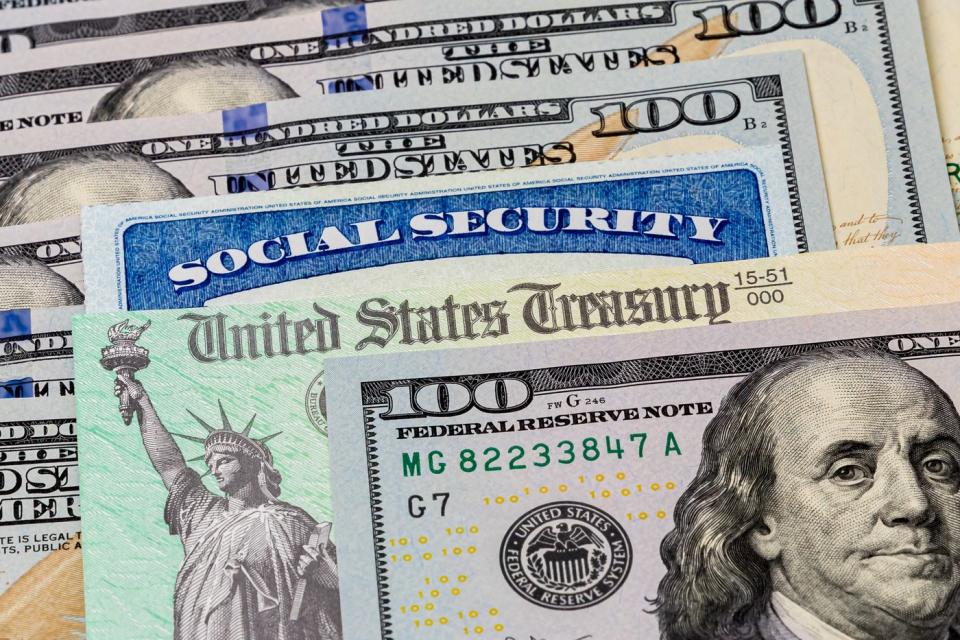The days of rising social benefits are probably over.
Over the past three years, Americans’ Social Security benefits have increased by a total of 18.8 percent because the cost-of-living adjustment (COLA) based on the CPI-W report is indexed to inflation and therefore increases with inflation.
However, the Federal Reserve seems to have finally got inflation under control. After two years of raising interest rates, the Fed announced its first rate cut in four years on Wednesday, cutting the benchmark rate by 50 basis points to a range between 4.75% and 5%.
This news has no direct impact on the 2025 COLA, but it does show that the Federal Reserve believes inflation is under control and will likely continue to fall toward its 2% target. It is also a sign that the labor market and economy have cooled enough that the central bank is not afraid of cutting rates too quickly.


This is what COLA 2025 looks like
The Social Security Administration uses the third quarter Consumer Price Index for Urban Wage Earners and Clerical Workers (CPI-W) to calculate the annual COLA.
Since we already know the CPI-W for July and August, we have two-thirds of the information needed to make a simple and informed estimate of the COLA for 2025.
The CPI-W rose by 2.87% in July and only 2.35% in August, so if only the data from these two months were used, the COLA for 2025 would be 2.6%.
Looking at the facts surrounding September’s inflation numbers, it seems more likely that the COLA will fall than rise. First, the comparison favors a slowdown in year-over-year inflation, as the CPI-W rose 0.23% from August to September 2023. The last time the index rose this fast was in April, so month-over-month inflation appears to be weaker, meaning year-over-year inflation would be lower than it was in August.
Second, one of the most volatile price categories, energy, is down this month. Oil prices have fallen to their lowest levels in over a year, hitting below $70 a barrel earlier this month. They are currently about 20% below year-on-year levels. That will put a significant damper on inflation, especially since the price of oil plays a role in so many goods and services. In other words, year-on-year inflation is likely to be even lower in September than it was in August, meaning 2.6% will likely be the highest COLA reading.
Why 2026 is likely to be even worse
The Federal Reserve’s main focus remains on bringing inflation down to 2%, and its preferred measure, the personal consumption expenditures (PCE), still stood at 2.5% in July.
The Federal Reserve is focused on supporting the labor market to achieve maximum employment, but will also be vigilant against a possible rebound in inflation. The 2026 COLA could be higher than the 2025 adjustment only if inflation rebounds.
According to its summary of economic projections, or “dot plot” forecast, the central bank expects PCE inflation to end this year at 2.3% and fall to 2.1% by the end of 2025. If that forecast holds, the COLA should be around 2.2% in 2026, or lower than the likely one for 2025.


The silver lining for pensioners
While the COLA in 2025 will be far from the 8.7 percent increase that welfare recipients received in 2023, retirees will ultimately be better off once inflation is under control and interest rates fall again.
Finally, the COLA is a reactive, backward-looking measure. The adjustment is determined by inflation that has already occurred, some of it more than a year ago, and those costs, like energy and food, are very real for retirees. The COLA only adjusts for them after they have already occurred.
In addition, lower interest rates make it easier to borrow and refinance debts such as mortgages or car loans, leading to greater financial flexibility.
Finally, retirees prefer dividend stocks because of the income they provide, and dividend stocks tend to rise when interest rates fall because bond investors reinvest in dividend stocks. This is good news for retirees who hold dividend stocks.
While your check from the government may not be as large as you’d like, welfare recipients benefit in other ways from falling inflation and lower interest rates. Overall, a normalized COLA is a good thing.
The $22,924 Social security bonus that most pensioners completely overlook
If you’re like most Americans, you’re a few years (or more) behind on your retirement savings. But a handful of little-known “Social Security secrets” could help boost your retirement income. For example: One simple trick could earn you up to $.22,924 more… every year! Once you know how to maximize your Social Security benefits, we believe you can retire with the security we all seek. Just click here to learn more about these strategies.
Watch the “Secrets of Social Security” »
The Motley Fool has a disclosure policy.
Social Security’s 2025 COLA will likely disappoint. The Fed says it could get even worse in 2026. was originally published by The Motley Fool

